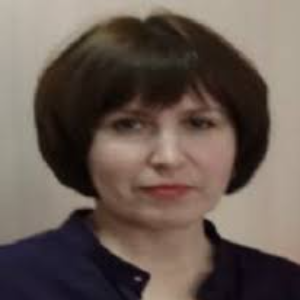Title : Solid-surface fluorescence of polycyclic aromatic hydrocarbons on the cellulose diacetate matrix
Abstract:
Solid-surface fluorescence (SSF) is a modern method which combines solid phase extraction with high-sensitive fluorimetric analysis in the solid phase of the sorbent. SSF has been successfully applied for trace quantification of organic and inorganic compounds in various media. The SSF analysis of polycyclic aromatic hydrocarbons (PAH) is of particular interest because of their toxicity.
As PAHs are found in various media in very small quantities, their quantitative analysis is impossible without prior concentrating, which makes the SSF method promising for the design of test systems for environmental monitoring. The possibility of luminescent PAH analysis in aqueous media using various solid-phase matrices has been established for silica gel, zeolites, fiberglass with silica particles, foamed polyurethane, nylon membranes, and cellulose.
We used cellulose diacetate (CDA) in the design of sorption matrices for the fluorescent analysis of polyaromatic compounds. The conditions of making film matrices from CDA with high sorption capacity for organic fluorophores, are presented. The set of properties of our CDA film matrix (its opacity, smooth surface, fine-pore structure, the pore size, the surface potential) was found to cause high sorption and fluorescence of pyrene in the solid phase of the sorbent.
The model solutions of pyrene in water-micellar and water-organic solvent media were used. Sorption of pyrene from solutions was performed in dynamic mode. The fluorescence spectra of pyrene and other PAHs in a solution and on solid matrices were recorded on a spectrofluorimeter Fluorat-02-Panorama. The increased fluorescence intensity of pyrene and some other PAH on the solid-phase matrix was shown.
The effect of the solvent nature (acetonitrile, ethanol, dimethylsulfoxide, dioxane) and its concentration on the fluorescence intensity of pyrene sorbed on the CDA film from a water-organic solution was studied. It was shown that DMSO and ethanol are the most effective solvent additives for pyrene solid-surface fluorescence. The detection sensitivity of the substance was fixed at 2?10-9 g/L. The possibility of quantative analysis on our solid-phase matrix in a concentration range of the fluorophore in the sorbate 2?10–6 − 2?10–8 g/L was shown with pyrene as an example.
The possibility of analyzing various PAHs by their SSF on the surface of the CDA matrix was tested. The maximum sorption capacity at the CDA film and the SSF intensity were noted for benzo(a)pyrene. The fluorescence spectra of the indicator pairs anthracene–phenanthrene and pyrene–fluoranthene were studied when the simultaneous presence of both isomers in the analyte, depending on the excitation wavelength. The obtained results allow us to consider this method promising for detecting the PAH contamination source.
The SSF technique with the CDA matrix may be proposed for the environmental monitoring of PAH traces. Our developed polysaccharide matrices are characterized by relatively low cost, the ability of raw material reproduction and waste biodegradation, which is important for their use in test systems and rapid analytic methods.


